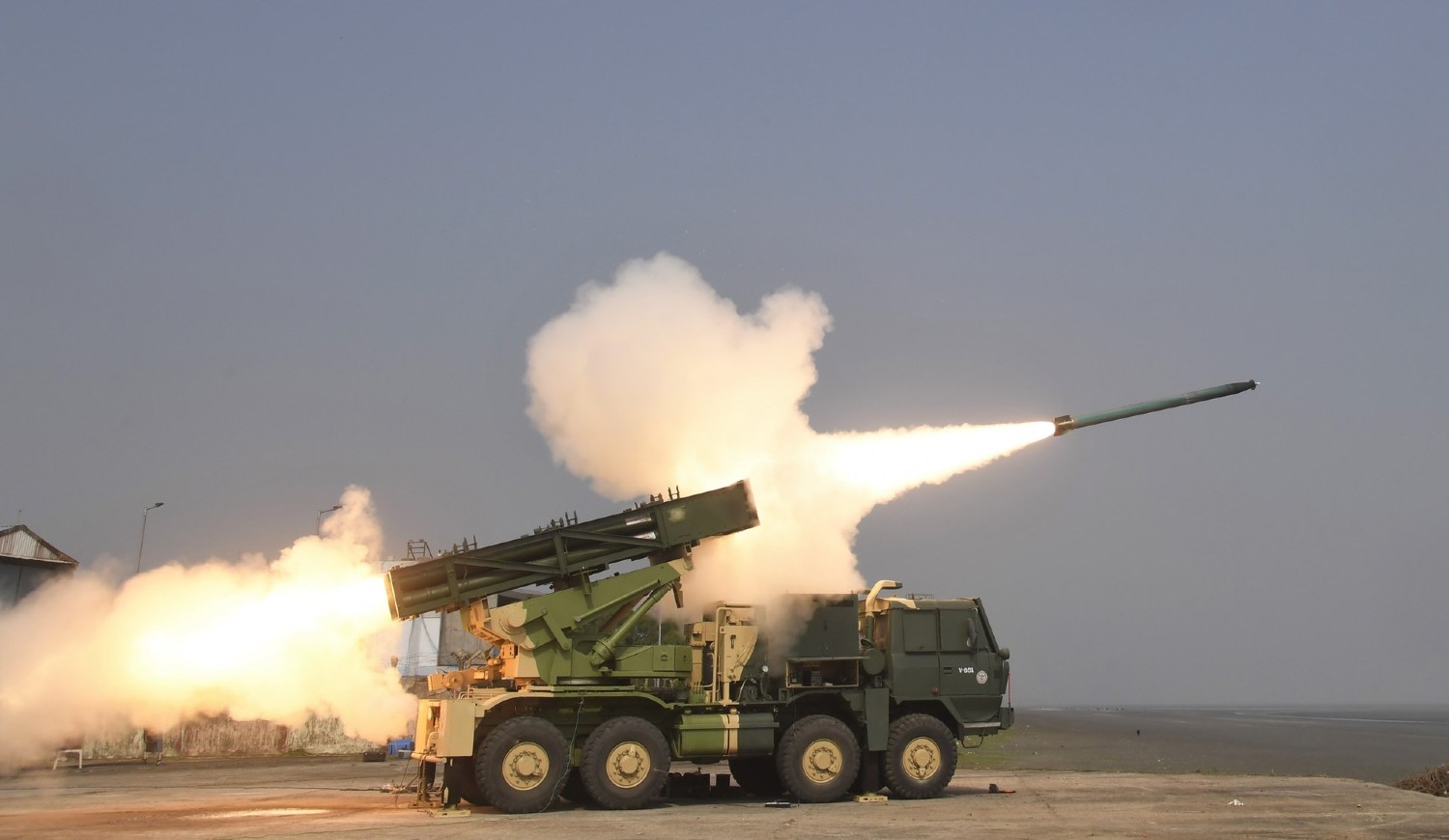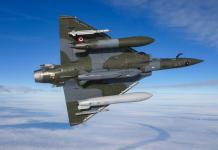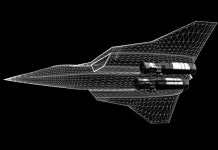France will test a European analog of the vaunted US-origin High Mobility Artillery Rocket System (HIMARS) in 2026, months after it expressed interest in the Indian ‘Pinaka’ Multiple Barrel Rocket Launcher System (MBLRS).
France plans to test a domestically developed rocket artillery system by mid-2026, Defense News reported on April 10. The French Directorate General for Armament (DGA) is currently seeking technological solutions that will facilitate the demonstration within a year.
The program is part of DGA’s push to develop a tactical strike capability in the 150-kilometer range. Two consortiums—Thales and ArianeGroup, and Safran and MBDA—are currently developing their own prototypes.
The development comes as the French Lance-Roquettes Unitaire, which is essentially a modified variant of the M270 multiple-launch rocket system (MLRS), is approaching the end of its service life by 2027. Though France was previously known to be evaluating MLRS options available worldwide, it appears that the country is now focusing on developing Indigenous capability amid calls from lawmakers and officials.
The return of conventional war to Europe with the Russian invasion of Ukraine has demonstrated that artillery is still indispensable in modern combat. The devastating impact of HIMARS strikes by Ukraine annihilated critical Russian military positions with deadly accuracy, altering battlefield dynamics at a crucial point in time.
The specific features of the French MLRS are not known. However, we know that it will mirror the American HIMARS while rivaling it.
HIMARS, for one, boasts a top road speed of 85 kilometers/hour and could be rapidly deployed in conflict zones, enhancing operational flexibility. It has firing ranges of up to 45 kilometers for the ER-MLRS rocket, 70 kilometers for the cutting-edge GMLRS rocket, and an impressive 300 kilometers for tactical missiles. Thus, it offers a wide range for hitting far-off targets and supporting military operations in a variety of terrains.

Though little is known about the French rocket artillery program, we know it is known as Frappe Longue Portée Terrestre (FLP-T) and has been allocated €600 million (US$663 million) in France’s 2024–2030 defense expenditure plan. The program aims to equip a battalion with 26 systems by 2035 and purchase at least 13 systems by 2030. The FLP-T program received its first wave of funding in November when the DGA inked innovation partnerships with the two consortiums.
The consortium of Safran and MBDA stated that their rocket artillery system, named Thundart, is based on “mature and mastered subsystems.” The consortium has additionally positioned Thundart as the only rocket artillery system created and constructed in Europe, free from American arms trade regulations, and with autonomous manufacturing that allows for production pace management.
However, the French government will decide after each consortium fires its demonstrator. The directorate says the consortiums will submit a proposal at the end of the current 18-month contracts, allowing the government to choose between different solutions, including off-the-shelf equipment.
The domestically developed HIMARS analog could also be marketed to allies.
Notably, the development of a HIMARS-like system locally in Europe would allow European countries to bolster their defense capability without the assistance of US President Donald Trump, who has exhorted them to hike their respective defense spending.
Additionally, Trump’s coercion of Ukraine has triggered a rethink among allies, with several of them questioning previous decisions concerning the purchase of US weapons. Thus, Trump’s erratic behavior and his hostility towards allies have prompted several European players to support self-sufficiency and European rearmament. France, for one, has taken the lead amid this geopolitical quandary.
In recent years, European forces looking to purchase rocket artillery have either chosen the US option, the Israeli PULS launcher, or the South Korean Chunmoo. France could present a much-needed European alternative, especially since the European Union’s executive branch has urged the member states to allocate a larger portion of their defense resources within the 27-nation bloc.
That said, while efforts to develop and test a new domestic MLRS are gathering pace in France, reports earlier indicated that it had shown a keen interest in the Indian alternative for HIMARS known as ‘Pinaka.’
France Was Interested In Pinaka
On a visit to India last year, the French Army’s Brigadier General Stephane Richou said that the service was evaluating the Indian Pinaka system.
“We are evaluating Pinaka because we need a system like that and evaluating this among the other systems of the highest countries… This is much more than a business partnership, this is cooperation,” Brigadier Richou told an Indian news agency at the time.
“For us, the industry of Indian defense is very effective. We are looking at the capacities offered by India as much as we are looking at the capacities of the highest countries providing equipment,” he added.
India created the Pinaka system to replace the Russian GRAD BM-21. The MBLRS system is apt for operating in modern security. The launcher’s Shoot-and-Scoot capability enables it to escape counter-battery fire, an imperative to survive in a drone-saturated battlefield.

Pinaka Mk-1 is a free-flight artillery rocket area bombardment system with a range of 38 kilometers, quick reaction time, and a high rate of fire. A single Pinaka system fires 12 rockets from a multi-barrel launcher in 44 seconds, while a battery can fire 72 rockets.
The DRDO is undertaking an enhanced version of the rocket system with an increased range between 60 and 90 kilometers. In addition to the enhanced version, the DRDO has also been testing a guided version of Pinaka with a range between 70 and 90 kilometers.
The best part is that each launcher can be operated independently. Rockets can be shot in various directions, either singly or in tandem. The launcher has four modes of operation: manual, remote, standalone, and autonomous.
This cutting-edge capability may have piqued France’s interest along with its burgeoning popularity in the export market. Earlier, the Pinaka MBRLS export contract with Armenia was the first export contract of a genuinely indigenous system by the Indian Defense Research and Development Organisation (DRDO) with near-zero import content.
The French Brigadier underscored that India and France are strategic partners, emphasizing that the two countries are already “sharing equipment” like Rafale fighter jets and Scorpene submarines. However, there has since been no update on a potential French acquisition of the system, likely because it is pursuing its own MBLRS development program.
- Contact the author at sakshi.tiwari9555 (at) gmail.com
- Follow EurAsian Times on Google News




